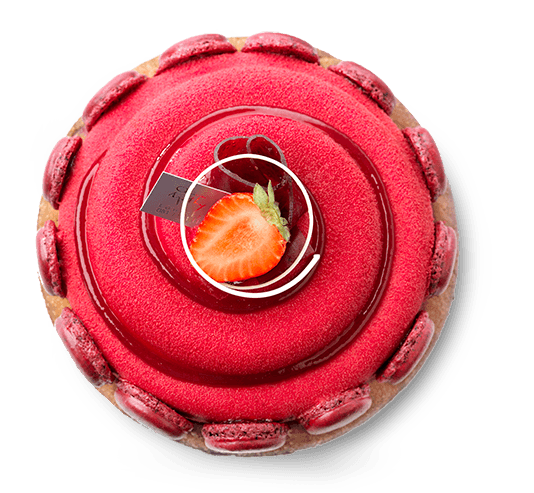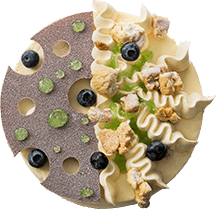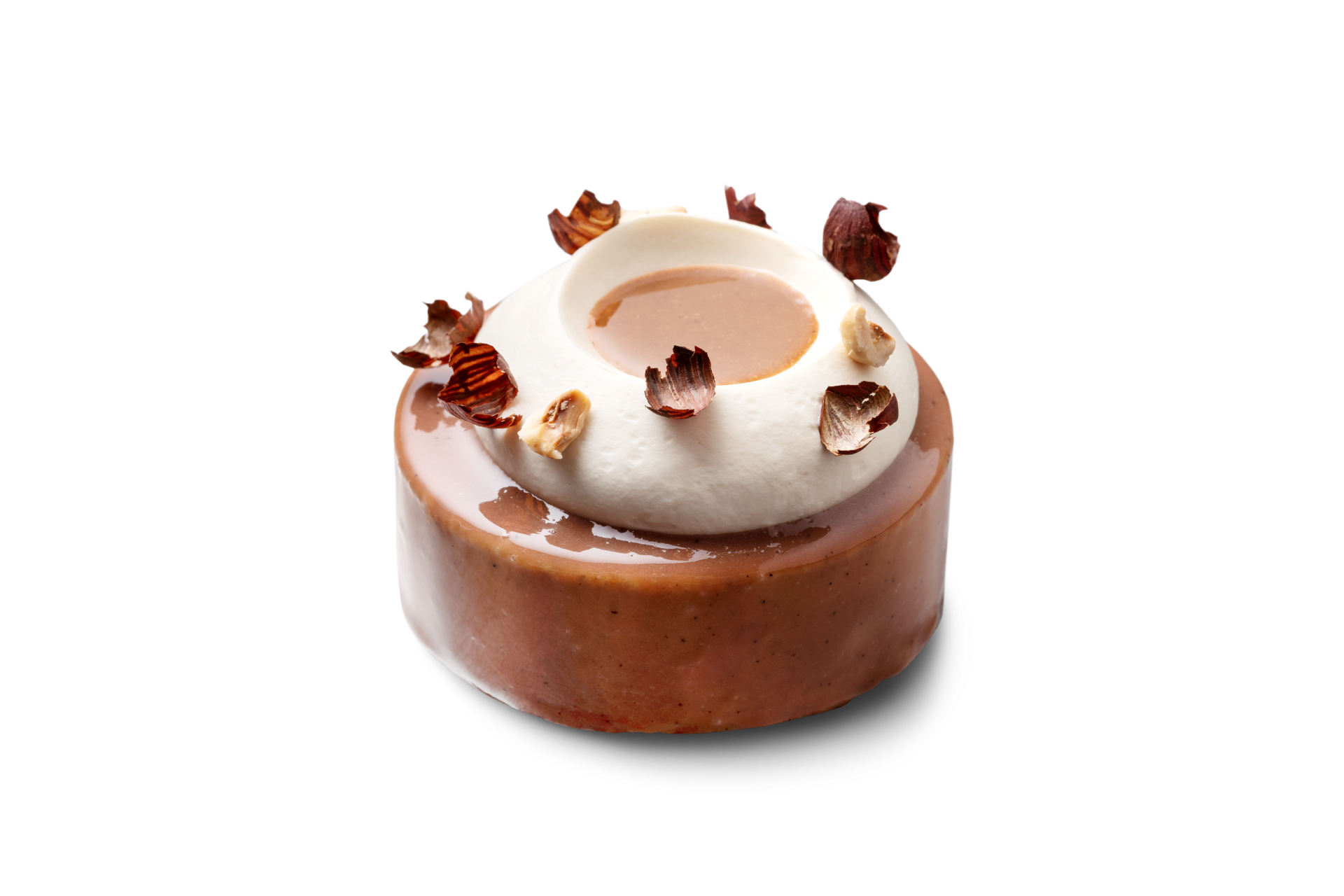Glazes and piping techniques for whipped cream
“Appearances count.” This might be a bit of a cliché, but in times like these when selfies, Instagram and other social media play a leading role in your customers’ lives on a daily basis, it is more true than ever. The customer’s first glimpse of your patisserie range is crucial.
The appearance of your range is the best way to stimulate and seduce. At the Coupe du Monde de la Pâtisserie in Lyon, we were left in no doubt that the creative teams were committed to using traditional handwork techniques in their creations. Piping bags and various nozzles had made a comeback. On stage at major patisserie competitions, we are also seeing colourful and fresh glazes that exude freshness, creativity and professionalism. Fortunately for the consumer, this technique is constantly being refined in order to put more focus on the flavour. The days of having a thick, sticky and often overly sweet layer of jelly in your mouth after the first bite are definitely behind us.
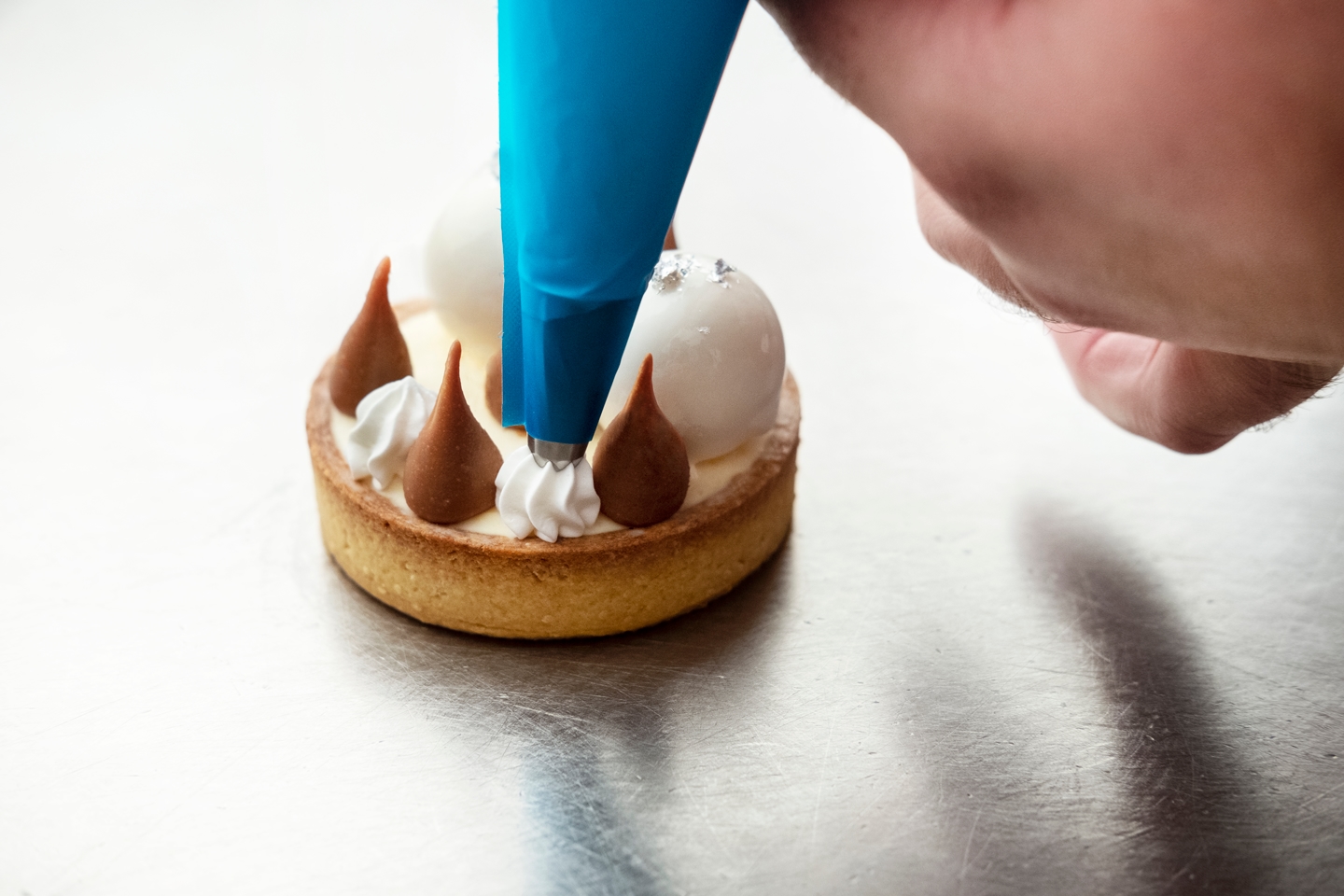
Willem Verlooy
It goes without saying that Debic keeps its finger on the pulse of these developments. We test new techniques and combinations in order to translate them into efficient and commercial recipes and solutions. Just for us, Willem Verlooy, owner of Verlooy Broodboetiek in Westerlo (Belgium), refined some popular recipes to glaze your entremets and pastries. For these creations he uses Debic’s range of specialty creams. No messing around with cans and syrupy end results, but beautifully liquid and opaque glazes based on products from the Debic range. Did you know that the vegetable fats in this product range result in a visibly better glaze after freezing or 24 hours in the display case?
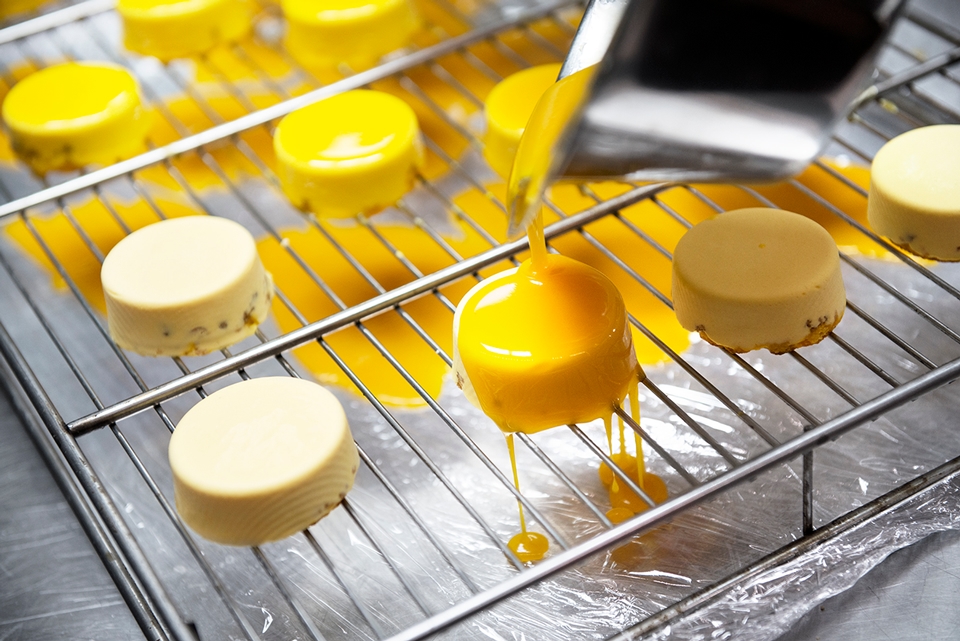
Tips for the perfect glaze
- Mix the ingredients carefully and avoid air bubbles.
- Process the glazes at around 35 to 38°C; additional mixing before use is recommended.
- Remove ice crystals or frost from products that are to be poured.
- If necessary, store the glaze in a sealed polystyrene box in the freezer.
- It is recommended to pour just before serving.
Whipped cream decorations
A flan, cake or pastry that has been masterfully topped with piped whipped cream is still the mark of true craftsmanship. That's why the classic piping bag with its variety of nozzles is once again leading the way in patisserie. Beautifully piped whipped cream emphasizes the freshness of your creations on display. That's why we got together with Willem Verlooy to let our imagination run wild and (re)introduce you to piping techniques from France and Spain. Below Willem demonstrates a number of tried and tested techniques which are feasible and commercially viable for every professional. Looking for a good investment for your company which will give you a quick return? Then get a few of the more unusual nozzles and plenty of practice!
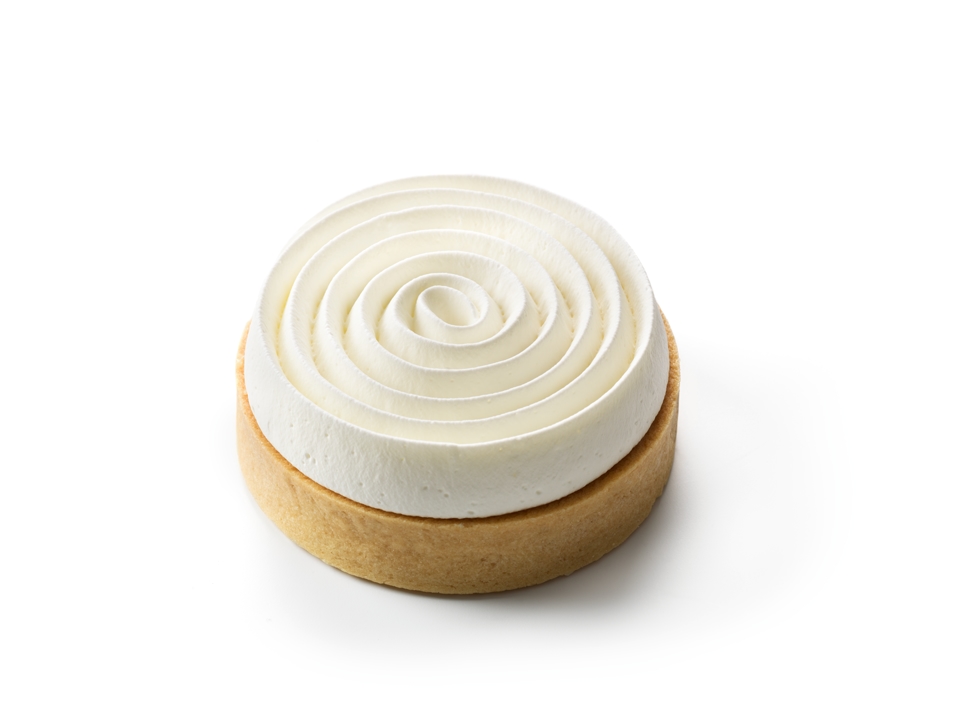
Piping technique: Swirl
Nozzle: Flat
Method: Place the tartelette precisely in the centre of a turntable. Keep the piping bag stable and make a slow movement, while the tartelette rotates at medium speed. Start in the middle and work outwards. Keep a constant pressure on the piping bag, so that the cream is evenly distributed.
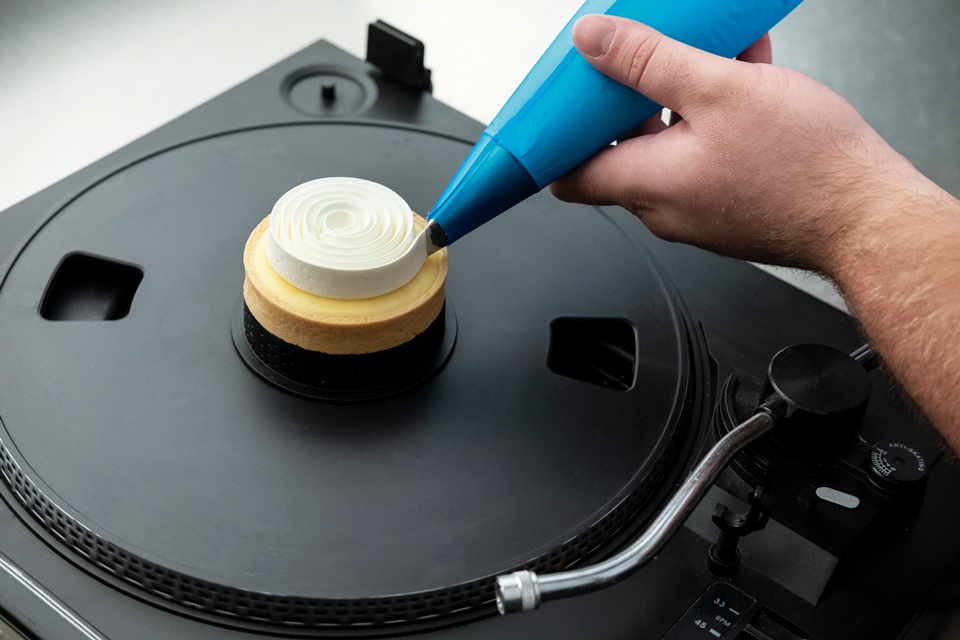
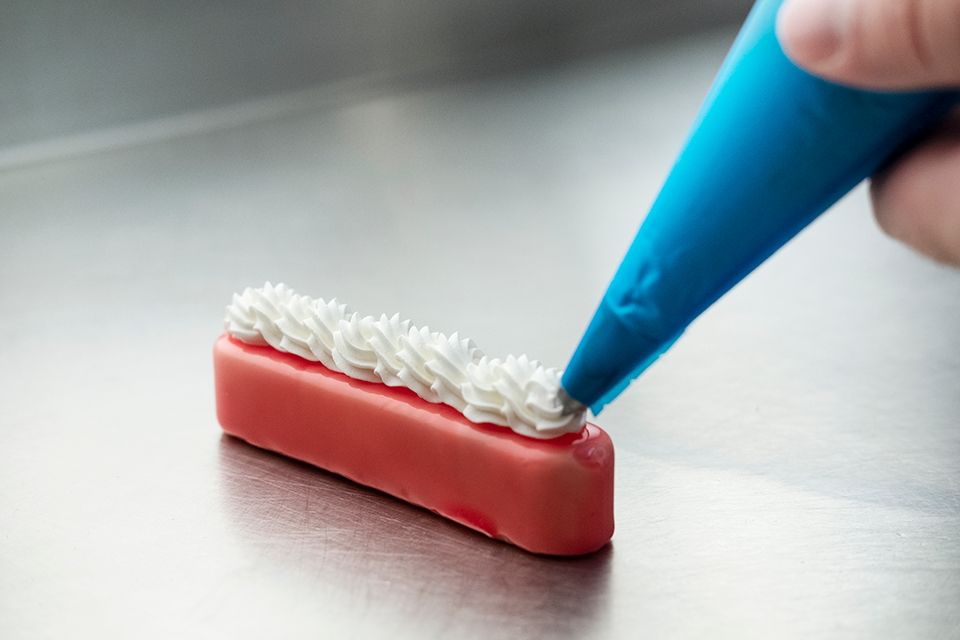
Piping technique: The wave
Nozzle:
Closed star
Method:
Make successive rounds, without lifting the piping bag. Work clockwise and back to front.
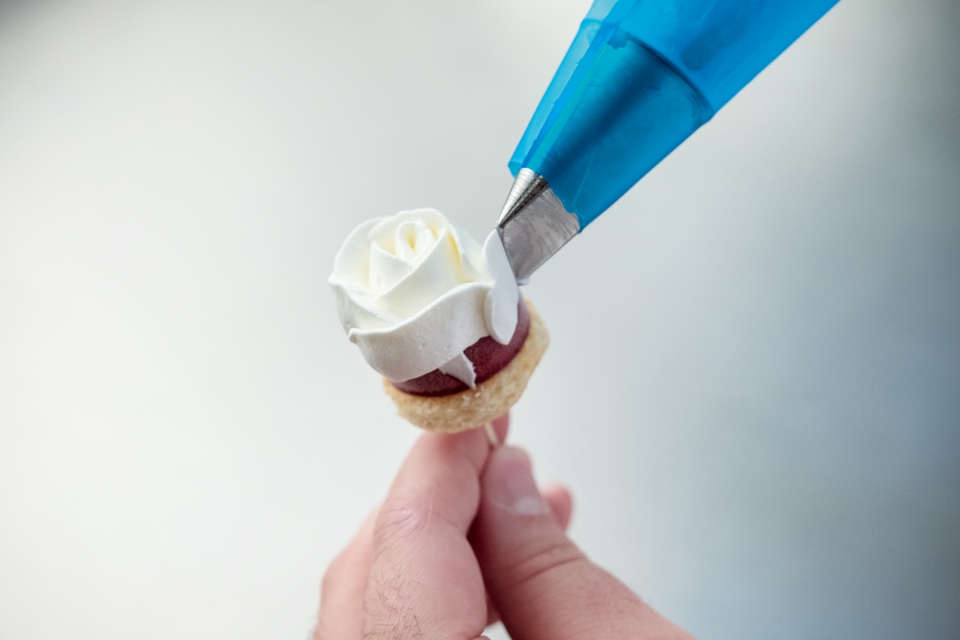
Piping technique: Rosette
Nozzle: Flat
Method: Create the rose by piping flat strips on top of each other. Start in the middle and work outwards. Start with a folded strip in the middle for extra stability.
